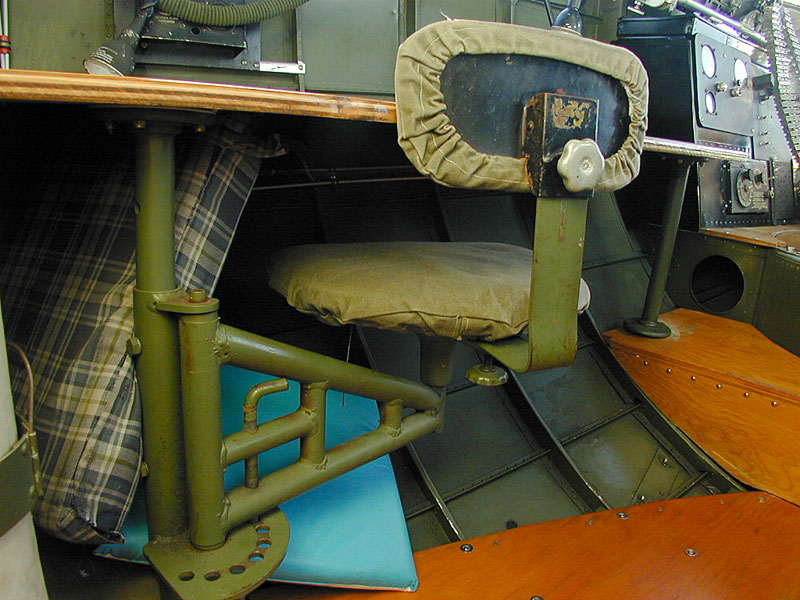If you'd like to comment on these photos or on B17s in general, see the accompanying B17 Blog |

The waist. On the g model the waist guns are offset to provide the gunners with more room to move. The guns are fed from the large wooden ammo boxes mounted on the fusilage. Further north is the ball turret, hung from the top of the fusilage by a rather spindly-looking tube. Notice that the two fusilage ribs are beefier where the turret is supported. The wingish things over the turret are the ammo boxes and feeds for the ball's pair of .50s. Can someone tell what the plywood slabs are for? |
Looking aft down the "hall". On the other side of the bulkhead is the bomb bay with bombs to port and plastic file boxes to starboard.
The light comes through the opening (and gun position) in the radio shack. Beyond is the hanger for the ball turret. |

Apologies for the blinding flash. This is the spot where control cables descend from the cockpit controls and turn horizontally on the pulleys to run to their respective control surfaces.
This is immediately above the nose hatch, the "front foyer" of the Fortress. Go forward to the navigator and bombadier positions or climb aft to the rest of the aircraft. |
Part harp and part spider web. The total length of the cables is remarkable. I don't know about the B17, but I've read that the B24 uses over a mile of the stuff. |

The navigator's seat. Compared to the other stations, this is practically the corner office. Note the extensive use of plywood to build decks on the fusilage bottom. |

Most corner offices don't have one of these hanging in the window although it's probably been on the wish list of many a desk jockey. |

The bombadier's perch with bomb sight, gun sight and, tilted to the right, the controls for the chin turret. Note again the wooden ammo boxes, and that the ammo for the port gun feeds from the opposite side of the aircraft. |

A nose full of 40s high tech. Norden bomb sight, remote gun controls and a formed plexiglass bubble were innovations. The Browning must have a pretty good action to pull those long belts of ammo over such a circuitous route.
|

As clever as it is simple, the method for keeping most of the wind, rain and smaller birds out of the chin turret. Our answer to "Hitler's Zipper"?
All photos copyright of Dirck Van Lieu |


